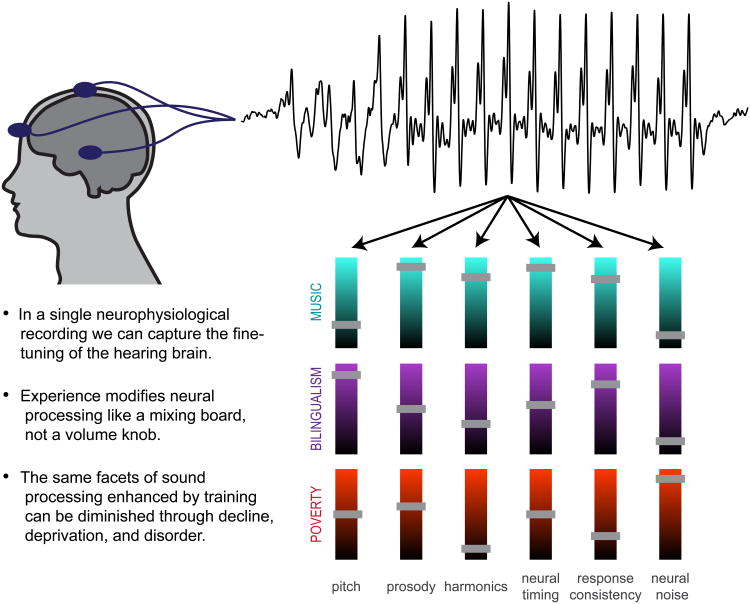Figure 2.
Measuring neural responses to speech allows us to evaluate auditory processing—and the legacy of auditory experience—in humans. Scalp electrodes pick up neural firing in response to sound, and the brainwave recapitulates a life in sound by reflecting the fine-tuning of the hearing brain through experience. The nature of an individual experience shapes the nature of the plasticity: different elements of sound processing are selectively modulated, for better or worse, within an individual. This is illustrated through a mixing board analogy, with several aspects of sound processing illustrated; the short bars reflect enhancements (above midline) or diminutions (below midline) to auditory processing. Bars at the halfway point reflect aspects of sound processing that appear unaffected by that particular experience. Although we highlight several aspects of sound processing in this illustration, much more may be glimpsed through these neurophysiological responses.

